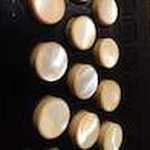
Not really a category of it’s own the Club accordion IS a two row diatonic button accordion. Some minor differences to it’s keyboard layout differentiate it. Produced mainly in the keys of C F or Bb Eb. Club accordions were produced mainly in Germany in the early to mid 20th Century. Specifically designed for playing Germanic traditional music, there were hundreds of accordion clubs set up where people played together. Tens of thousands of this type of accordion were produced in the 1930s 40s and 50s.
See the Hohner Club accordion models list here
There is a great musicians guide to the Club System here . http://www.delaguerre.com/delaguerre/pedagogy/club/toc.html.
Some Club specific tunes here https://sites.google.com/site/clubakkordeon/quellen
Loads more here https://www.stammtischmusik.at/noten/griffschrift.shtml
Another Club focussed site here . https://hohnerclubmadness.wordpress.com/
Keyboard layouts http://members.yline.com/~arizona/harmonika/ . Mainly Steirische but click on Club bottom left and there they are
The Club System
Whilst the Club system and the accordion clubs themselves are now defunct and long gone. There are a number of reasons why these are particularly interesting starter boxes. Especially when you consider that “de clubbing” them (i.e making them into a normal two row) is fairly straightforward. This is something we regularly do for people. Having said this if you learn on a Club you can play everything that you can on a non Club. Plus you get some very interesting options as your playing progresses.
- Value for money. Usually very high quality accordions and often with better quality reeds and materials than their plain Jane non club cousins
- The club system is very intuitive for waltz mazurka and many other types of music which flow rather than bounce. In some respects better and easier than other keyboard systems in the opinion of many.
- They normally have an accidental row, many having seven accidental buttons, and because this frees up space on the main two rows you get additional low notes.
- Often with a 4 octave bass, the bass end is often of higher quality.
- There are a load of 3 voice versions if that is your thing
- There are still available
- BLING by the bucket full!
- There is a whole pile of tab notation for Club accordions known as Griffschrift
So what’s Different about the Club accordion?
There are a few subtle differences in the layout but the two that matter are these
THE GLEIGHTON
(for the most common C/F tuning) on the inside row there is ONE button which instead of being C/D C push and D pull is in fact C/C push and pull (don’t worry the missing D is usually on the half row should you need it)
THE BASS END
If you look from the back of the box the top two left buttons play different note and chords push and pull. On a two row they will play the same note and chord. forget it. Leave these alone it just means you get a bonus note and chord.
What is De Clubbing?
De Clubbing refers to re-tuning some of the reeds in a Club accordion. This is done to make the configuration the same as a normal two row. There are two parts to this.
- The Gleighton: tuning the pull reeds up two semitones to make the treble side of the inside row the same as a two row
- The bass end: tuning two bass reeds and three or four chord reeds to make the bass end behave in the same way as a two row
To re-tune the Gleighton is fairly straight-forward and makes the biggest difference. The bass re-tuning is a larger job and is worth doing if you are set on having a two row type bass……..or just forget about this and stick with the Club layout.
- One row diatonic button Accordion or Melodeon (e.g Hohner HA114 . including cajun quebecois etc)
- Two row Diatonic Button Accordion or Melodeon (e.g Hohner Pokerwork including 2 1/2 row)
- Three row Diatonic Button Accordion (e.g Hohner Corona)
- Two row Chromatic Button Accordion (e.g Hohner Double Ray small)
- Chromatic Button Accordion (full size)

